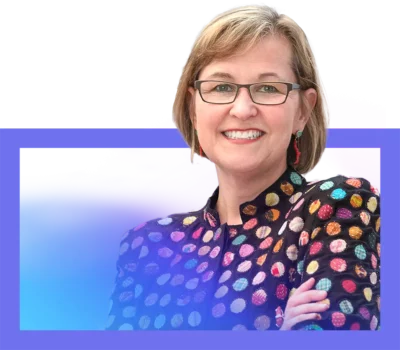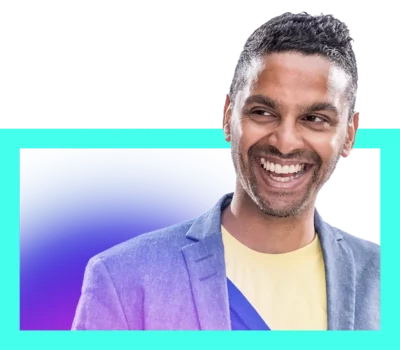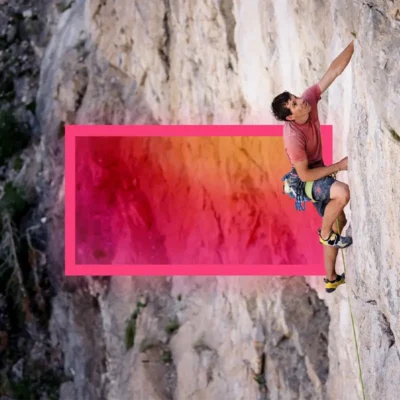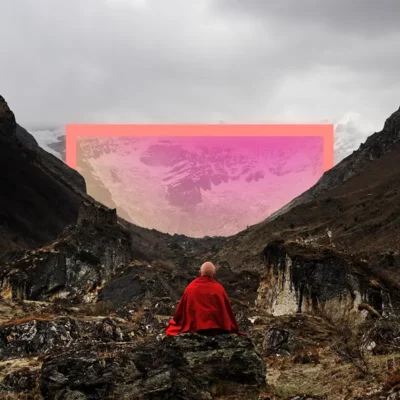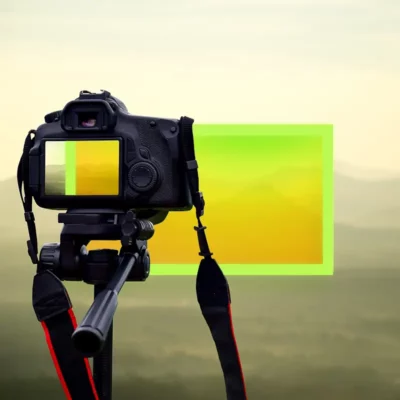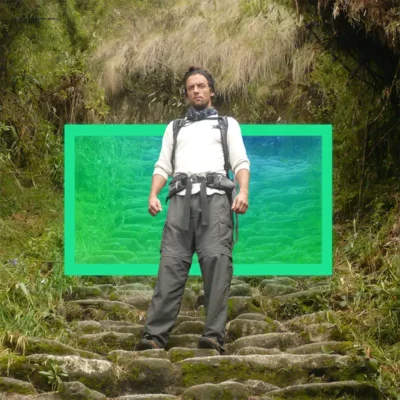Derailed by beauty
Arriving in a strange town, disoriented and desperate to crawl into bed, Kaywin Feldman realizes she is just steps from an eight-century-old art treasure: a small chapel covered floor to ceiling with one of Giotto’s most extraordinary frescoes. She wanders inside, and the course of her life abruptly changes.

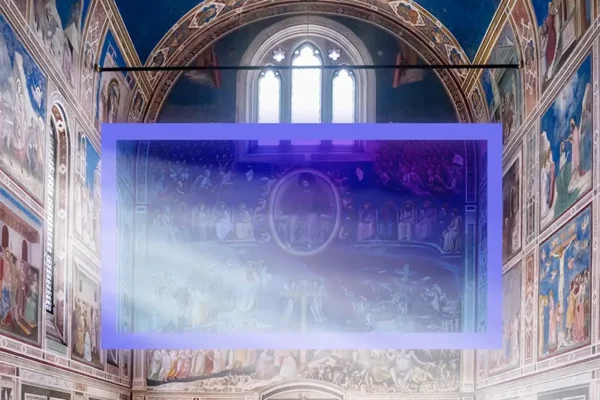
Table of Contents:
Transcript:
Derailed by beauty
KAYWIN FELDMAN: I don’t even change my clothes. I just head out to make it there in time. It’s close to the center of town, so I don’t have to walk far. I pay my entrance fee and walk in. There are hardly any visitors. The chapel is small and attached to a monastery. The building itself is tall but nothing terribly special. But suddenly I see it: Every inch of wall, floor to ceiling, is painted with a narrative cycle. The first thing I notice is the stillness. I can’t even hear my sneakers on the stone floor. It’s cool inside. Then the glow. The whole room, even the arched ceiling, glows lapis blue from the paint.
Inside this still room, my body stills, too. I am in need of sanctuary, and here it is. It feels safe, sacred. It lets me emotionally and intellectually clear my mind, so that I can really look at the frescoes. I’m hardly breathing. My heart rate slows. I can feel my mouth open as I take in the room.
ROHAN GUNATILLAKE: Kaywin Feldman grew up in a military family, and her childhood memories are dominated by visits to art museums in the various cities and towns where her family moved. You might say she was destined to become a museum director, and at the young age of 28, she achieves just that. Today, Kaywin presides over the National Gallery of Art in Washington, DC. She is not only the first woman to hold the role, but is a champion for gender equity by highlighting salary discrepancies in the world’s largest museums.
In this episode of Meditative Story, Kaywin recalls being thrust into an unfamiliar town as a young, disoriented traveler. There she stumbles upon something so otherworldly that the very course of her life is re-routed.
In this series, we combine immersive first-person stories and breathtaking music with the science-backed benefits of mindfulness practice. From WaitWhat, this is Meditative Story. I’m Rohan, and I’ll be your guide.
The body relaxed. The body breathing. Your senses open. Your mind open. Meeting the world.
FELDMAN: When I am in high school in the early 1980s, my English teacher puts one of those Scholastic posters on the wall. It shows a little monster sitting on top of a pile of books and eating one of them. It says, “Some books are meant to be tasted, others swallowed, and some few to be chewed and digested.” And I don’t know this at the time, but it’s actually a quote from Sir Francis Bacon. That quote sticks with me throughout my life as I learn to taste and sometimes digest great works of art. I even encounter art that instead of me swallowing it, it swallows me whole, and changes my life.
As a child, I am like the monster, always curious, often devouring books. We live near Oxford, in England. Our house sits on a quiet cul-de-sac. It feels safe here, but the heating system is terrible. One day my parents call a family meeting, and we huddle around the leaky coal stove in the living room. Engine parts are scattered throughout the room. My dad, a captain in the coast guard, has decided to take apart a 1949 Bentley, and we are helping him clean the parts. I am 10, and my brother is 13. My dad puts his hands on his knees, and peers at us with his handsome Alan Alda face. He tells us that he and my mom will be taking a trip to what is then the Soviet Union for two weeks.
“We can hire a babysitter to take care of you, which is fine,” he says. “Or you can just take care of yourselves, and we’ll pay you the same money we would pay the babysitter. But in exchange you have to be responsible.”
My brother and I look at each other, but we already know the answer. We’ll take the money. We can take care of ourselves! And we do. I have just a short walk to school, and my brother takes a bus to his. For two weeks, we defrost the meat my mom leaves in the freezer and eat cereal for breakfast.
One day I break a glass bowl and cut my foot. I am happy to have an excuse to go to the neighbor’s, who knows we are on our own. I think I just want to know she is there and get a little TLC. But I like feeling like a big girl. Looking back, I think my parents were nuts. But it does give us confidence to take care of ourselves, to take risks.
GUNATILLAKE: Watch your mind make its judgments. It’s hard to not judge how parents bring up their children. So if judgements do arise, just watch them happen and see if you can avoid adding a second layer of judgment on yourself for them being there in the first place.
FELDMAN: Right after college in Michigan, I join an archeology dig in Central France. I’m determined to be a classical archeologist. The tiny hillside village is hard to get to. This is before GPS, and the dig site is literally off the map. I summon up the big girl, and I get there alone, taking planes, rickety buses, asking for directions in a foreign language.
I had been envisioning a site set against lush, lavender-filled rolling hills and bowers of grapes. Instead it’s a scruffy field along a roadway. The soil is volcanic. It’s black and dusty, and there’s not much shade. That’s okay, because I’m so excited to see what treasures are buried beneath. I love that the earth hides past civilizations. You can start to resurrect secrets just by looking straight down. Someone hands me my tools. I feel the warm, solid wood of the heavy pickaxe in my palm.
I pull on my boots and clamber over to the one square meter of dirt that will be all mine to dig up. The idea is you take your axe to break up the top layer, and you excavate your meter, and then you go down another meter and down another. That very first day, I start digging, and soon I see something that doesn’t look like a root or a rock. And sometimes your fellow students will trick you and throw something just like a modern coin in your spot just to keep you on your toes. Still, I want to approach whatever this is with a lot of care and caution. So I take my trowel and my brush, and I gingerly scoop out the soil around this hard, white object. It’s longer than I think, and I keep scraping away, wiping the sweat from my forehead with the back of my hand. It looks thin and bony, and soon one bit connects to other small bits. The light is changing, and still I am digging and brushing away the dirt from around it. When I’m pretty sure I know what it is, I call over the dig boss, a professor’s assistant.
He nods her approval, pulls out her camera to document every angle, and confirms what I suspect: it’s the remains of a foot belonging to a late Iron-age human. On my very first day! The rest of him or her ends up being in other people’s dig spots, but I find it first, and I am ecstatic. I am the only American, and I love being here, working with my whole body in the hot sun in the volcanic soil, eating bread and soft rich cheese for lunch, drinking wine with the others in the medieval square at the end of the day. There is nothing else to do, no Internet, so life is simple. It is my Utopia.
GUNATILLAKE: This is Kaywin’s Utopia. Let’s be here. The heat, the community, the hard work, the mission. Imagine being in this moment, this place, this feeling. What stands out for you?
FELDMAN: After the dig, I feel confident. I pack my backpack and start traveling around the former Roman Empire, from North Africa to Turkey and eastern Europe. But soon I feel in over my head. Some of these are hard places to be a young woman alone. I am 21 or 22. And just being there alone sends messages in those cultural environments. I’m constantly making decisions: is it safe to stay in this place? Should I walk at night to that train station? I learn to rely on gut instinct. When it’s your own life hanging in the balance, you develop an acute awareness of the environment. You must take in everything to see how safe or unsafe it is. Even so, I have a series of difficult experiences. Buses in Turkey drop you off in the middle of nowhere and you have to wait by the side of the road for another bus that might or might not show up. One night at midnight, I don’t have enough money for a hotel, and so I decide to take a night train, but when the train comes, it is a military transport, crowded with army men. There is not a woman in sight. I’m walking along the platform at midnight, and my heart is in my toes. I must decide. I deny my instinct and get on that train. I count my luck when I arrive safely at the next city.
Another night I can’t find a hotel in a small town in the Turkish countryside, and a boy directs me to the house of a man he knows. I barricade myself in a room, but all night I hear the man’s wife yelling at him and throwing dishes for taking me in. I decide that night, I need to leave Turkey. I just want to go home to England. It’s an epic, exhausting journey out of the country. I have to take several ferries just to get to Athens. Then I board a packed and stuffy train – three days headed through former Yugoslavia for Venice. Some compartments still bear labels saying they are reserved for men wounded from war – and they mean World War 2, which still feels recent and visceral in that part of the world. Early the third morning, just into the Italian border, the train suddenly stops. “Sciopero, a strike,” shouts the conductor in Italian. “Everybody out!”
That’s all he says. We are thrown out into a rural hillside. I have exactly 1,000 lire in my pocket. That’s only 80 cents. It’s not enough for a bus to Venice, but it will get me as far as Padua, where I can finally cash my last remaining traveler’s checks.
This day is one of the lowest ebbs of my life. I’ve been wearing the same clothes for days. It’s still hot in early fall. I’m not just hungry and sweaty and tired. I am raw. I am despondent about all of the challenges I experience. I’m pessimistic about humanity, about our wars, our poverty, our treatment of each other, especially women.
I finally get to Padua in the afternoon. I change some money and arrive at a hostel. I take off my heavy pack and throw it on one of the old iron bedsteads. I have a choice: I can shower and rest and buy some food, or I can make it to the Scrovegni Chapel just before it closes. I’ve taken Art History 101, and I don’t remember much, but I remember the Scrovegni Chapel is seminal – built in the early 14th century by a banker, filled with frescoes painted by Giotto. It’s a millennium beyond what I’m usually interested in. I may be beaten down, but I’m still the curious girl I have always been. I just have to find her again. And so that chapel calls to me in this low hour of my life.
I don’t even change my clothes. I just head out to make it there in time. It’s close to the center of town, so I don’t have to walk far. I pay my entrance fee and walk in. There are hardly any visitors. The chapel is small and attached to a monastery. The building itself is tall but nothing terribly special. But suddenly I see it: Every inch of wall, floor to ceiling, is covered with painted panels. The first thing I notice is the stillness. I can’t even hear my sneakers on the stone floor. It’s cool inside. Then the glow. The whole room, even the arched ceiling, glows lapis blue from the paint.
I am immediately drawn in. There’s a moment of struggle – do I just look at everything I like? Or should I try to follow the story? Because the segments narrate the life of Christ and the life of the Virgin. And some scenes are really obvious, and some are more obscure. You have to work at it.
Inside this still room, my body stills, too. I am in need of sanctuary, and here it is. It feels safe, sacred. It lets me emotionally and intellectually clear my mind, so that I can really look at the frescoes. I’m hardly breathing. My heart rate slows. I can feel my mouth open as I take in the room.
Giotto spent 855 days creating these frescoes – 855 days. Those days produce the most influential, phenomenal work of his entire lifetime. I notice his brilliance at directing your view, your vision, so that your eye goes where he wants it to go. There’s one section, the Lamentation of Christ, showing when he’s brought down off the cross. A hillside draws your eye down to Christ, laying there, and there’s angels in the sky, floating above. And one angel has this look of such total grief on its face.
This is a period where artists are just beginning to depict emotions. The figures aren’t just static figures; they are suddenly like real people – physically and emotionally. It’s utterly daring and innovative of Giotto to paint that way. That scene! And there’s another that’s famous, The Kiss of Judas. It’s the moment in the garden of Gethsemane when Judas kisses Christ, betraying his identity. In my barely beating body I can feel the impact of the world, right there in that kiss.
And that’s when I start crying. It’s not the religiosity that strikes me but the emotionality, the artistry, the shock of beauty, the shock of modernity. It feels like this is the moment the Middle Ages became the Renaissance. I’m overcome. I’m transitioning through everything I’ve been through. Like I’m coming out of my own dark age into something suddenly lighter. It is a moment of absolute wonder at beauty and human creativity.
When I walk out of that chapel and into the late afternoon light, I feel as though I am floating. I feel completely restored as a human being. And I know with absolute certainty that life is good and that people are good. And despite everything I’ve been through, I see there is a bigger meaning to life and that life is worth living. I feel whole.
This long magical moment of awe changes my life. I regain hope, and I fall in love with art. I switch my graduate studies from archeology to art history.
The 13th-century monk Albertus Magnus wrote that when we encounter something so big and unusual and portentous, it’s almost as though our heart collapses for a moment. He says that feeling springs from a “felt desire to know the cause.” It’s about the journey of a person who does not know, on her way to finding out.
When I become the director of the Minneapolis Institute of Art, we start an institute called the Center for Empathy in the Visual Arts. I believe you can trace a line from wonder to empathy. And human resilience springs from that, from the wonder and curiosity and common humanity we feel in the presence of beauty and human creativity.
As the monster in the poster says, there are many ways to experience that art. They don’t all devour you inside and out like that afternoon in the Scrovegni Chapel. But I do go on to have that experience several times. When it happens, I always feel like I could die tomorrow, completely satisfied with my life in the world. Like I don’t need anything else to be complete. And then I realize that the path to knowing the cause is in constant flux – each moment that ends in crowning satisfaction begins the heart’s next search. It’s a journey best taken in the spirit of shared humanity. Great art ties us ineffably to each other. It lifts us from the baser parts of ourselves and sets us on the shared path to finding out.
Rohan’s closing meditation
GUNATILLAKE: I was very taken by Kaywin’s account of being on the archaeological dig. Taking your time, pickaxe handle heavy in your hand, unearthing past civilisations. Led by the quality that drove Kaywin from the beginning: curiosity.
Curiosity in meditation is all about asking questions. And using those questions to help orient the mind. The point is not to get the perfect answer, but instead to look and notice what comes up. Because it is through looking that we learn. And it is through learning that we become wise. So have fun.
What is the best way you know of settling down? What is most reliable? Is it taking a few deep breaths?
Is it resting the awareness in the body? Where in the body do you find it most straightforward for your attention to settle?
And what is happening now? What is happening in the body? Are there any parts of the body which particularly stand out?
What is happening in the mind? Are there any mental patterns or feelings that particularly stand out?
What is happening? Can you be aware of what is happening while it is happening? Gentle and open.
So far in the meditation, we’ve used questions as the tools to dig. But just as Kaywin knew the time to put the pickaxe down and take out the brush, in meditation we also need to know how to encourage the more subtle things to be revealed.
So instead of asking questions, let’s just watch. Watch and wait, being patient for life to reveal itself.
The mind quiet. The body quiet.
And just letting your awareness brush over experience. Life revealing itself. The mundane, the noise, the lovely.
Whatever is here. Just brushing it with the lightest of our attention.
And to close, just resting.
Some things we unearth in ourselves are good to excavate, carefully, and then place them in the museum of our lives. Others we leave in the soil to be left alone. And that can be ok too.
Thank you Kaywin. I really appreciate the places you took us, from the dig to the poster with the monster on it, to Scrovegni, your eyes everywhere with wonder.
And thank you. May your days too be full of wonder, the big and the small. I hope you’re keeping safe and well.
See you soon.
